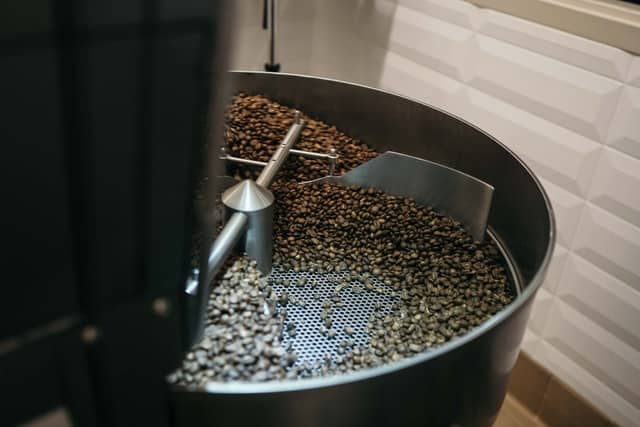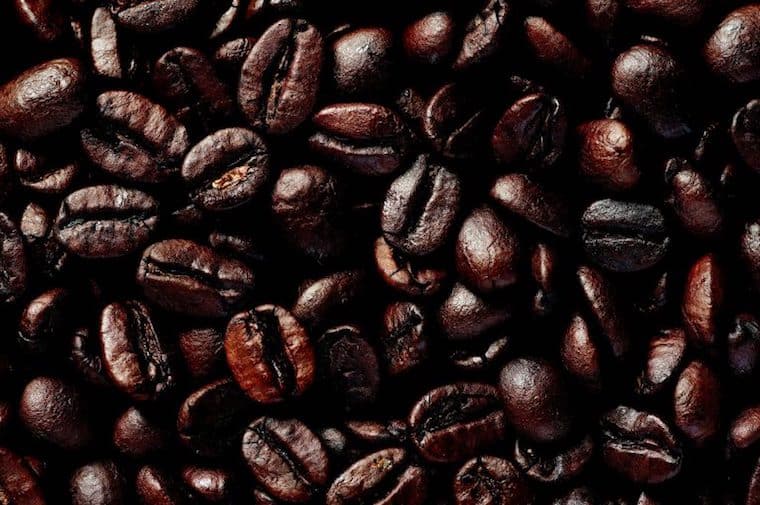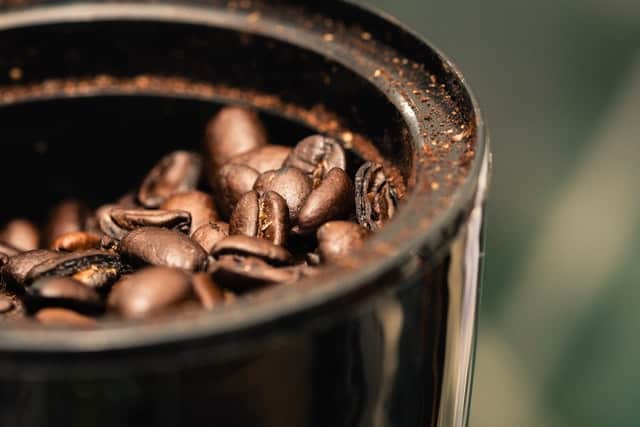Have you ever looked at some coffee beans and wondered, “Why are coffee beans so oily?”. Is it something added to the coffee after roasting? Does it do any good?
Well, this is the real reason. Oily coffee beans are caused by the roasting style, which pushes coffee past the “Second Crack” and into a dark-roast territory.
There’s nothing wrong with oily coffee beans, they are not bad, they are simply a property of a well-roasted dark roast.
Let’s take a deep dive in some questions that will arise and take a closer look into the oily coffee beans and why it occurs.
What Causes Coffee Beans to Be Oily
To get a good grasp on this phenomenon, let us take a moment to talk about some chemistry and science in coffee. Trust me, it is not only valuable but exciting and will help you understand the “Whys?” and “How’s?”.
There is a list of solubles in the chemical makeup of coffee.
Solubles, by definition, are bits of matter that can dissolvable by water.
When we brew coffee, solubles release from the cell walls of the bean and into the cup. Caffeine and acidic solubles dissolve from the coffee bean’s cellular walls in a short amount of time.

Sugars, lipids, and, worst of all, fibers take more time to dissolve. This is a crucial concept to keep in mind as we dive into roasting, which will answer the question of oily coffee.
Roasting coffee modifies the coffee beans in a way that is delicious to brew. This is common knowledge, but have you ever wondered how?
Roasting breaks down the cellular structure of the bean and induces a process called the Maillard Reaction. In the Maillard Reaction, sugars “brown” and caramelized while aromas and flavors develop. Did you know that one of coffee’s solubles produces during the Maillard reaction?
They are Melanoidins and account for almost a quarter of a roasted coffee bean! Melanoidins are responsible for coffee’s brown color in roasting and brewing.
Why Are Some Coffee Beans Oily and Others Dry
Now that we have some concepts under our belt, we reach a good time to talk about oily coffee and why it appears. As the roasting process breaks down the cellulose of the beans, another reaction occurs.
The outside of the coffee beans become more porous.
Lipids, or oils, that stay within the beans’ interior, start to ooze out and onto the surface of the shell.
The stage in which a coffee bean becomes porous enough for the oils to leak is the “Second Crack”.
It is a comical name but crucial to roasting, but there are two “crack” stages. They indicate a release of steam and gases from the beans.
The “first crack” occurs in all roast types. A light roast will end shortly after the “first crack.”

A medium roast may roast a minute past the first crack. The second crack is when we reach the dark roast territory. Oils may start to appear on the exterior of the beans. If the “first crack” signifies a cracking of the beans, the “second crack” must mean that these beans are almost at their limit of structural integrity.
Lightly roasted coffee tends to keep to its structural integrity; thus, no oils will be seen on the outer shell. Dark roasted coffee will almost always show oils because of the exterior porosity.
This leads me to a bit of interesting information: you can train yourself to grade the type of roast by not only color but the oils that show!
Are Oily Coffee Beans a Good Thing? (Better Than Non-Oily)
Roasting coffee on the darker side is popular in American and European coffee culture. Europe is big on strong brewing ratios, which means they like their coffee with an intense concentration.

Dark roast coffee paired with a strong brewing ratio will make for a cup suitable for this standard. American coffee culture operates similarly.
Americans like stronger brewing ratios and roast, excluding those in the specialty coffee ring where extraction rates are typically 18-22% using lighter roasted coffee (Coffee Standards from sca.coffee).
Roasting coffee on the dark side of the spectrum can help balance defects in green coffee if it’s of lower grade quality. Commodity coffee, green coffee bought at low prices for higher quantity, is commonly lower grade.
Roasting it darker will help cover imperfections while making it appealing to most coffee drinkers.
Are Oily Coffee Beans Bad for My Grinder
What does all this oil do to your coffee-making equipment? Oils exposed to air change over time. Oxidation occurs when oils meet air and produce less-than-favorable flavors in the coffee beans.
This oil left behind in your coffee grinder can change the flavor of your coffee.
This is not an oil shaming article, but I would be remiss if I did not say that oils can pose a danger to your coffee equipment at home or in the cafe.
Cleaning standards for grinders are crucial for keeping cross-contamination under control. Oxidation does not discriminate, especially in your expensive coffee grinder.

These nasty flavors will cling onto any sort of porous surface, including the plastic hoppers and compartments on your coffee grinder.
Grindz is an affordable and easy way to capture oils and rid them from your equipment and coffee bean containers. It is completely natural and made from corn starch.
All you do is drop an appropriate dose into your grinder and grind them until the hopper is empty. Here’s a link to a handy PDF by Urnex, detailing a proper dose and specifications on the product.

Make sure to take a look at my article, Coffee Oxidation, A Scientific Look. I deep dive into everything about oxidation and how it affects your brew!
Why Is Starbucks Coffee So Oily
Starbucks has its own unique roasting process, which creates an even higher level of flavor extraction than most coffees do, meaning more oils end up being drawn out during processing. I think their coffee tastes a little burnt, but obviously, millions of people are just fine with the way it tastes.
However, Starbucks does not use any additional fat or oil-based ingredients at all in its products; therefore, there is no saturated fat content in your coffee. They aren’t adding anything to make their beans look oilier.
Starbucks tends to roast their beans darker than other coffee companies, so the oils are more prevalent in Starbucks coffees.
This is why oily beans can be a sign that they have been over-roasted and will taste burnt or bitter when brewed, at least in Starbucks ‘ case. Starbucks also roasts their beans to full flavor which means you get more of those natural flavors while still maintaining some level of acidity for balance, giving all drinks an even better taste!
Like I said, I’m not the biggest fan, but many people love they way they roast there beans
Wrapping Up Why Coffee Beans Are Oily
You will notice the next time you see dark roasted coffee beans; they will almost always appear shiny. This holds true for most big box coffee roasters.
There is no right or wrong way to roast or brew coffee, but I hope some of the tips I included in this post help those with a palate for dark roast coffee. Take a closer look at the next bag of dark roast you receive and use your newfound knowledge of roasting science to determine the level of roast.
Notice how oil amounts vary per roast. It is an indicator of that roaster’s specific style and their decisions that went into making this coffee for you. Isn’t that neat? You can tell a lot about the bean’s appearance, and oil happens to be a specific key indicator.
